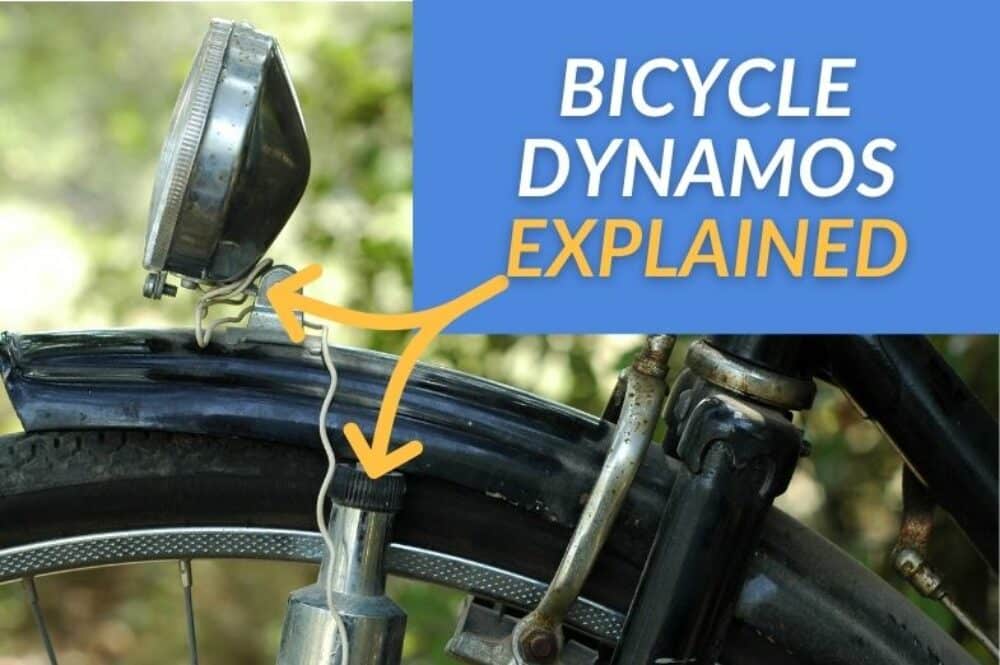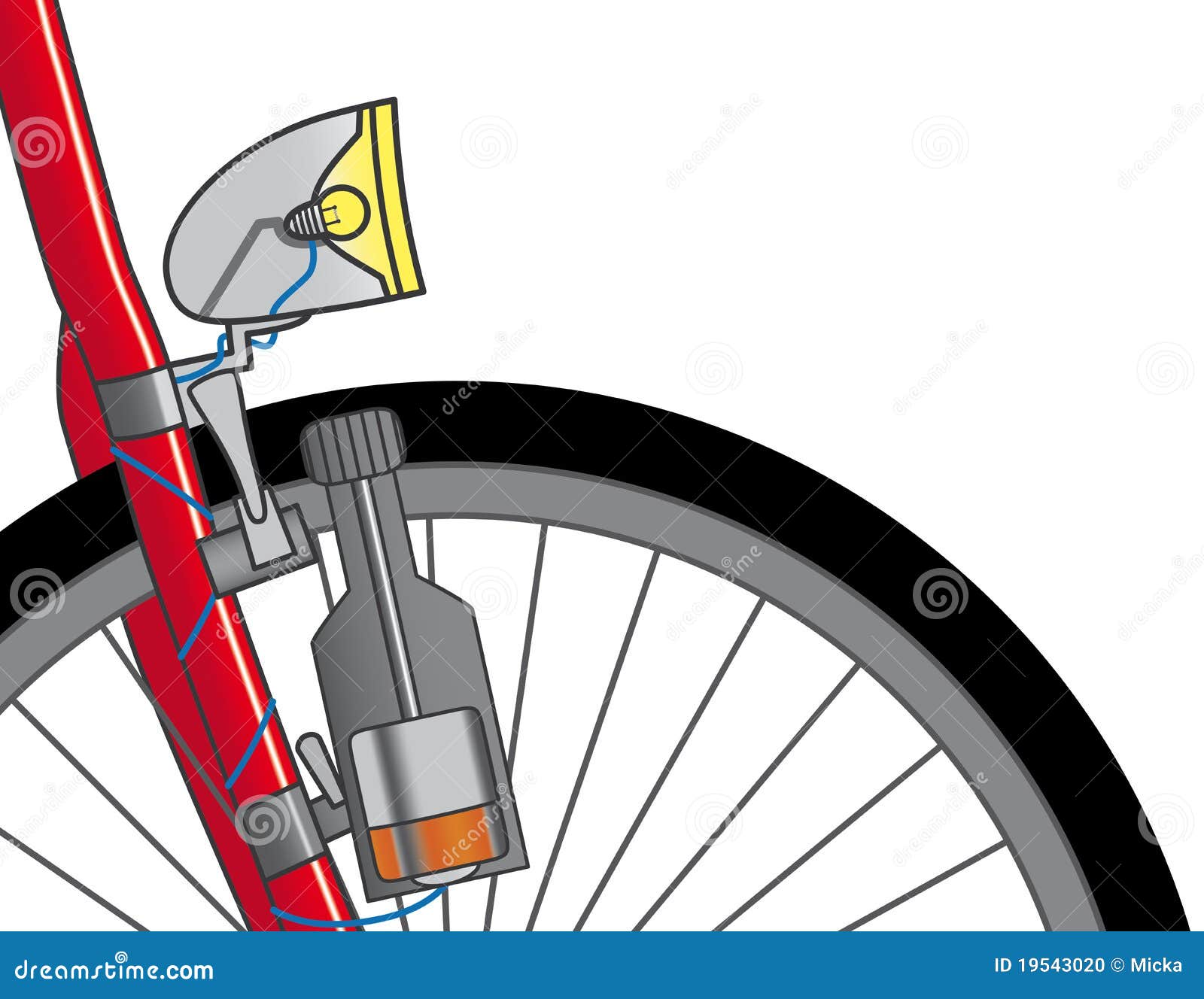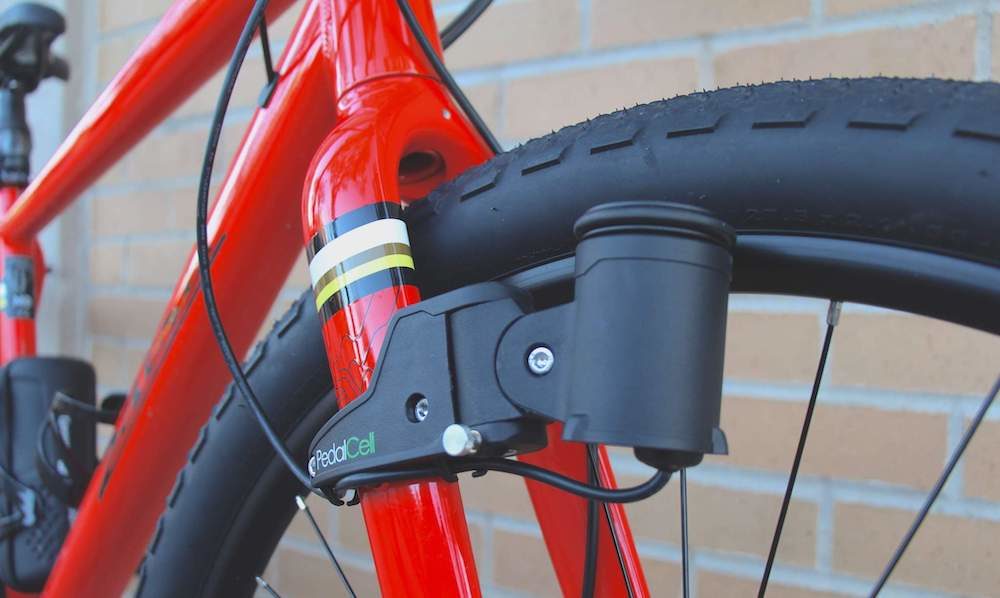What is a Dynamo and How Does it Work?
A dynamo is a type of electrical generator that converts mechanical energy into electrical energy, commonly used on bicycles to power lights, computers, and other accessories. The dynamo of a bicycle is typically a small, hub-based generator that uses the rotation of the wheel to produce electricity. This innovative technology has been a staple in the cycling world for decades, providing a reliable and efficient source of power for riders.
The history of dynamos dates back to the early 20th century, when they were first used on bicycles as a means of powering lights. Over the years, dynamo technology has evolved significantly, with modern dynamos offering improved efficiency, reliability, and power output. Today, dynamos are used by cyclists all over the world, from casual commuters to professional athletes.
So, how does a dynamo work? In simple terms, a dynamo uses the rotation of the wheel to generate electricity. As the wheel turns, it drives a small generator, which produces a electrical current. This current is then sent to the lights or other accessories, providing a reliable source of power. The beauty of a dynamo is that it eliminates the need for batteries, making it a convenient and environmentally friendly option for cyclists.
There are several types of dynamos available, including hub dynamos, bottle dynamos, and sidewall dynamos. Hub dynamos are the most common type, and are built into the hub of the wheel. Bottle dynamos, on the other hand, are attached to the frame of the bike and use a small roller to generate electricity. Sidewall dynamos are a less common type, and use the rotation of the tire to generate electricity.
In terms of power output, dynamos can produce anywhere from 1 to 6 watts of electricity, depending on the type and quality of the dynamo. This may not seem like a lot, but it’s enough to power a set of lights, a computer, and even a smartphone. Some high-end dynamos can even produce enough power to charge a battery pack, making them a great option for long-distance touring.
Overall, the dynamo of a bicycle is a remarkable piece of technology that has revolutionized the way we think about powering our bikes. Whether you’re a casual commuter or a professional athlete, a dynamo is a great option for anyone looking for a reliable and efficient source of power.
How to Choose the Right Dynamo for Your Bike
With so many dynamo options available, choosing the right one for your bike can be a daunting task. However, by considering a few key factors, you can ensure that you select a dynamo that meets your needs and provides reliable power for your bike’s lights and accessories.
One of the most important factors to consider when choosing a dynamo is power output. Different dynamos produce varying amounts of power, ranging from 1 to 6 watts. If you plan to power a set of lights, a computer, and other accessories, you’ll want a dynamo with a higher power output. On the other hand, if you only need to power a single light, a lower power output dynamo may be sufficient.
Efficiency is another key factor to consider. Look for a dynamo with a high efficiency rating, as this will ensure that you get the most power out of your dynamo. Some popular dynamo brands, such as Shimano and Schmidt Sondelbichler, offer high-efficiency dynamos that are designed to provide reliable power.
Compatibility is also crucial when choosing a dynamo. Make sure that the dynamo you choose is compatible with your bike’s setup, including the type of hub and the size of the wheel. Some dynamos are designed specifically for certain types of bikes, such as road bikes or mountain bikes, so be sure to choose a dynamo that is designed for your type of bike.
In addition to these factors, you should also consider the type of dynamo you need. Hub dynamos, bottle dynamos, and sidewall dynamos are the most common types, each with their own advantages and disadvantages. Hub dynamos are the most popular type, as they are easy to install and provide reliable power. Bottle dynamos are a good option for bikes with a non-hub dynamo setup, while sidewall dynamos are a good choice for bikes with a high-speed setup.
Some popular dynamo models to consider include the Shimano DH-3N80, the Schmidt Sondelbichler SON 28, and the Supernova Airstream. These dynamos are all high-quality options that offer reliable power and efficiency.
Ultimately, the right dynamo for your bike will depend on your specific needs and preferences. By considering the factors mentioned above, you can choose a dynamo that provides reliable power and meets your needs.
Installing and Maintaining Your Dynamo: A Step-by-Step Guide
Installing and maintaining a dynamo on your bicycle can seem like a daunting task, but with the right tools and a little bit of knowledge, it’s a relatively straightforward process. In this section, we’ll walk you through the steps to install and maintain your dynamo, including troubleshooting common issues and tips for optimal performance.
**Step 1: Choose the Right Location** The first step in installing a dynamo is to choose the right location on your bicycle. The dynamo should be installed in a location that is easily accessible and protected from the elements. The most common location for a dynamo is on the front wheel, but it can also be installed on the rear wheel or on the frame of the bicycle.
**Step 2: Install the Dynamo** Once you’ve chosen the right location, it’s time to install the dynamo. This will typically involve attaching the dynamo to the wheel or frame using a bracket or clamp. Make sure to follow the manufacturer’s instructions for installation, as the process may vary depending on the type of dynamo and bicycle you have.
**Step 3: Connect the Wiring** After the dynamo is installed, you’ll need to connect the wiring to the lights and other accessories. This will typically involve connecting the dynamo to a switch or regulator, which will control the flow of electricity to the lights and other accessories.
**Step 4: Test the Dynamo** Once the wiring is connected, it’s time to test the dynamo. Turn the pedals and check to make sure the lights and other accessories are working properly. If they’re not, you may need to troubleshoot the issue or consult the manufacturer’s instructions.
**Troubleshooting Common Issues** There are several common issues that can arise when installing and maintaining a dynamo. One of the most common issues is a faulty connection or wiring problem. If you’re experiencing issues with your dynamo, try checking the connections and wiring to make sure everything is secure and functioning properly.
**Tips for Optimal Performance** To get the most out of your dynamo, there are several tips to keep in mind. One of the most important tips is to keep the dynamo clean and free of debris. This will help to ensure optimal performance and prevent damage to the dynamo. Additionally, make sure to check the dynamo regularly to ensure it’s functioning properly and make any necessary adjustments.
By following these steps and tips, you can ensure that your dynamo is installed and maintained properly, providing you with reliable power for your lights and other accessories.
Maximizing Your Dynamo’s Power Output: Tips and Tricks
To get the most out of your dynamo, it’s essential to optimize its power output. Here are some expert tips and tricks to help you maximize your dynamo’s performance:
**Optimize Your Dynamo’s Position** The position of your dynamo can significantly impact its power output. Make sure to install your dynamo in a location that allows for optimal airflow and minimal interference from other bike components. Experiment with different positions to find the one that works best for your bike.
**Use the Right Dynamo for Your Bike** Not all dynamos are created equal. Make sure to choose a dynamo that is specifically designed for your bike’s type and size. This will ensure that your dynamo is optimized for your bike’s unique characteristics and can produce the maximum amount of power.
**Maintain Your Dynamo Regularly** Regular maintenance is crucial to ensure your dynamo continues to perform at its best. Make sure to clean your dynamo regularly and check for any signs of wear or damage. This will help to prevent any issues that could impact your dynamo’s power output.
**Use a Dynamo with a High Efficiency Rating** When choosing a dynamo, look for one with a high efficiency rating. This will ensure that your dynamo is able to produce the maximum amount of power while minimizing energy loss.
**Experiment with Different Dynamo Settings** Many dynamos come with adjustable settings that allow you to customize the power output to your specific needs. Experiment with different settings to find the one that works best for your bike and riding style.
**Consider Upgrading to a High-Output Dynamo** If you’re looking to maximize your dynamo’s power output, consider upgrading to a high-output dynamo. These dynamos are specifically designed to produce more power than standard dynamos and can be a great option for riders who need a lot of power for their lights and accessories.
By following these tips and tricks, you can maximize your dynamo’s power output and get the most out of your bike’s electrical system. Remember to always follow proper safety precautions when working with electrical systems, and consult a professional if you’re unsure about any aspect of your dynamo’s installation or maintenance.
Dynamo vs. Battery-Powered Lights: Which is Best for You?
When it comes to choosing a lighting system for your bike, you have two main options: dynamos and battery-powered lights. Both options have their pros and cons, and the best choice for you will depend on your specific needs and riding style.
**Dynamo Lights** Dynamo lights are a popular choice among cyclists because they are reliable, efficient, and environmentally friendly. They work by harnessing the energy generated by the rotation of the wheels to power the lights. This means that you don’t need to worry about running out of batteries or replacing them frequently.
**Battery-Powered Lights** Battery-powered lights, on the other hand, are a more traditional option. They are powered by batteries, which can be replaced or recharged when they run out. Battery-powered lights are often less expensive than dynamo lights, but they can be less reliable and may require more maintenance.
**Pros and Cons of Each Option** Here are some pros and cons of each option to consider:
**Dynamo Lights:** Pros:
Reliable and efficient
Environmentally friendly
No need to worry about running out of batteries
Cons:
Can be more expensive than battery-powered lights
May require more maintenance than battery-powered lights
Battery-Powered Lights:
Pros:
Less expensive than dynamo lights
Easy to install and maintain
Can be used on multiple bikes
Cons:
Less reliable than dynamo lights
May require more frequent battery replacements
Can be less environmentally friendly than dynamo lights
**Which is Best for You?** Ultimately, the best choice between dynamo lights and battery-powered lights will depend on your specific needs and riding style. If you’re looking for a reliable and efficient lighting system that is environmentally friendly, dynamo lights may be the best choice for you. However, if you’re on a budget and want a lighting system that is easy to install and maintain, battery-powered lights may be a better option.
It’s also worth considering a combination of both options. Some cyclists use dynamo lights as their primary lighting system and battery-powered lights as a backup. This can provide the best of both worlds and ensure that you always have a reliable lighting system.
Real-World Applications: How Dynamos are Used in Different Types of Cycling
Dynamos are used in a variety of cycling applications, from commuting to touring to mountain biking. In this section, we’ll explore how dynamos are used in different types of cycling and highlight the benefits and challenges of using a dynamo in each context.
**Commuting** For commuters, a dynamo is a great way to power lights and other accessories while riding to work or school. Dynamos are especially useful for commuters who ride in low-light conditions, as they provide a reliable source of power for lights and other safety accessories.
**Touring** Touring cyclists often use dynamos to power lights, GPS devices, and other accessories while on long rides. Dynamos are a great option for touring cyclists because they provide a reliable source of power and eliminate the need for batteries.
**Mountain Biking** Mountain bikers often use dynamos to power lights and other accessories while riding in low-light conditions. Dynamos are a great option for mountain bikers because they provide a reliable source of power and are designed to withstand the rigors of off-road riding.
**Benefits of Using a Dynamo in Different Types of Cycling** There are several benefits to using a dynamo in different types of cycling. Some of the benefits include:
**Reliability**: Dynamos provide a reliable source of power for lights and other accessories, eliminating the need for batteries.
**Efficiency**: Dynamos are designed to be efficient, providing a high level of power output while minimizing energy loss.
**Convenience**: Dynamos are easy to use and require minimal maintenance, making them a convenient option for cyclists.
**Challenges of Using a Dynamo in Different Types of Cycling** While dynamos offer many benefits, there are also some challenges to consider. Some of the challenges include:
**Installation**: Dynamos can be difficult to install, especially for those who are not familiar with bicycle maintenance.
**Maintenance**: Dynamos require regular maintenance to ensure optimal performance, which can be time-consuming and costly.
**Cost**: Dynamos can be more expensive than other types of lighting systems, which can be a barrier for some cyclists.
Overall, dynamos are a great option for cyclists who need a reliable source of power for lights and other accessories. While there are some challenges to consider, the benefits of using a dynamo far outweigh the drawbacks.
Common Dynamo Myths and Misconceptions: Setting the Record Straight
There are several common myths and misconceptions about dynamos that can make it difficult for cyclists to understand the benefits and limitations of this technology. In this section, we’ll address some of the most common myths and misconceptions about dynamos and provide facts and evidence to dispel them.
**Myth #1: Dynamos are Inefficient** One of the most common myths about dynamos is that they are inefficient and waste a lot of energy. However, this is not true. Modern dynamos are designed to be highly efficient and can convert up to 70% of the energy generated by the bicycle into usable electricity.
**Myth #2: Dynamos are Unreliable** Another common myth about dynamos is that they are unreliable and prone to failure. However, this is not true. Modern dynamos are designed to be highly reliable and can last for thousands of miles without requiring maintenance.
**Myth #3: Dynamos are Heavy** Some cyclists believe that dynamos are heavy and can add significant weight to a bicycle. However, this is not true. Modern dynamos are designed to be lightweight and compact, and can be easily installed on a bicycle without adding significant weight.
**Myth #4: Dynamos are Expensive** Some cyclists believe that dynamos are expensive and can be a significant investment. However, this is not true. While dynamos can be more expensive than some other types of lighting systems, they offer a number of benefits that can make them a worthwhile investment for serious cyclists.
**Facts and Evidence** To dispel these myths and misconceptions, let’s look at some facts and evidence. Studies have shown that modern dynamos are highly efficient and can convert up to 70% of the energy generated by the bicycle into usable electricity. Additionally, dynamos have been shown to be highly reliable and can last for thousands of miles without requiring maintenance.
**Conclusion** In conclusion, dynamos are a highly efficient and reliable technology that can provide a number of benefits for cyclists. By understanding the facts and evidence about dynamos, cyclists can make informed decisions about whether or not to invest in this technology.
Conclusion: Why a Dynamo is an Essential Component of Your Bike
In conclusion, a dynamo is a vital component of any bicycle, providing a reliable and efficient source of power for lights and other accessories. By understanding the basics of a dynamo, how to choose the right one for your bike, and how to install and maintain it, you can unlock the full potential of your bicycle and enjoy a safer, more enjoyable riding experience.
Whether you’re a commuter, a touring cyclist, or a mountain biker, a dynamo can provide a number of benefits, including increased visibility, improved safety, and reduced maintenance. By investing in a dynamo, you can take your cycling to the next level and enjoy a more confident, more enjoyable ride.
In addition to the benefits mentioned above, a dynamo can also provide a sense of independence and self-sufficiency, allowing you to ride without worrying about running out of batteries or relying on external power sources. This can be especially important for long-distance touring cyclists or those who ride in remote areas with limited access to power.
Overall, a dynamo is an essential component of any bicycle, providing a reliable and efficient source of power for lights and other accessories. By understanding the basics of a dynamo and how to choose, install, and maintain one, you can unlock the full potential of your bicycle and enjoy a safer, more enjoyable riding experience.
So why not consider investing in a dynamo for your bike today? With its many benefits and advantages, it’s an investment that’s sure to pay off in the long run.









